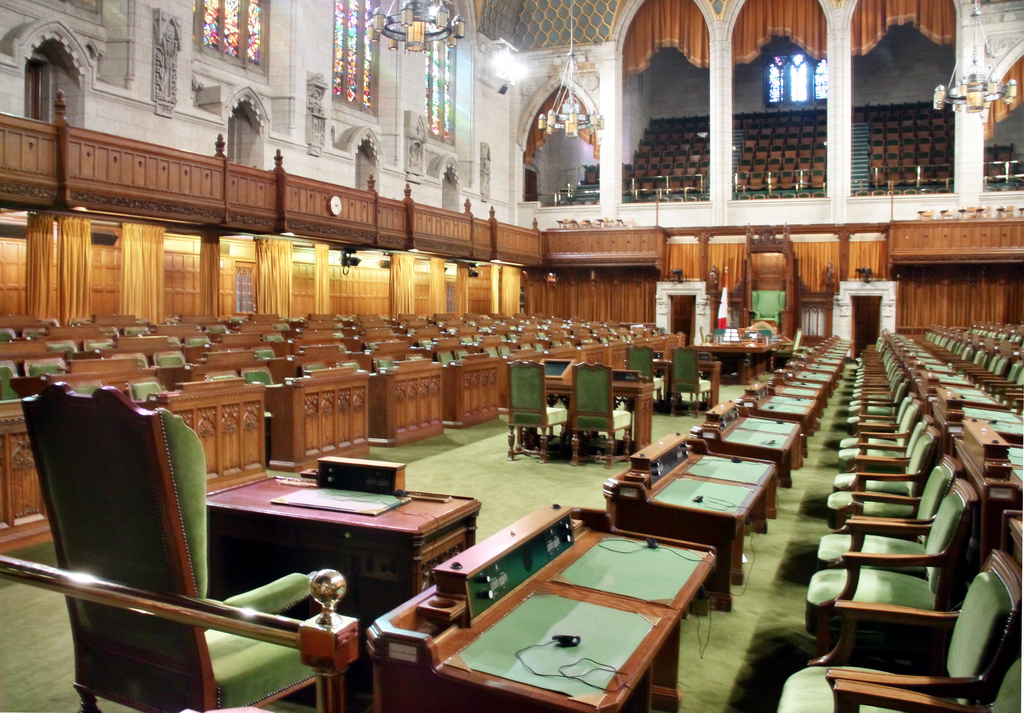During the general election in 2015, Justin Trudeau, the leader of the 3rd party, made a number of commitments to rebuild many of Canada’s important governmental institutions including the House of Commons, the Senate, and the “first past the post” electoral system. After more than 18 months into its mandate, the Liberal government has made some progress in fulfilling the promises that were so central to the campaign but have also disappointed many advocates and reformers who had high expectations.
There is little argument that Prime Minister has changed the Senate fundamentally with the appointment of 28 independent Senators and expulsion of the previous Liberal Senators from his party caucus. In terms of reforming the first past the post electoral system, it now seems clear that the Prime Minister has lost his appetite for an overhaul of the status quo, citing a lack of consensus among the political parties. As for House of Commons’ reforms, “business as usual” might be the most appropriate way in which to describe the lack of progress in making committees more effective in scrutinizing legislation, reforming the access to information legislation, changing the current system of party financing, and making the day to day functioning of the House of Commons more relevant.
While the Prime Minister has not yet fulfilled his election promises with regards to institutional change, he has quietly pivoted instead and moved decisively to produce a modern way government appointments are made.
Canadian prime ministers have their hands on many levers in their exercise of power but one of their most potent ones is their ability to appoint individuals to a wide range of government jobs. In the course of a full five-year majority government, Canadian prime ministers will likely make more than 3,000 full and part time so-called Governor-in-Council (GIC) appointments. Examples of the wide range of appointments include judges to the Supreme Court, CEOs and board members for Crown Corporations such as the National Arts Centre, Export Development, and the Bank of Canada, all deputy and associate deputy minister level positions, all ambassadors and other heads of missions, as well as the leaders of dozens of agencies, tribunals, and commissions including all of the Agents of Parliament such as the Auditor General and the Commissioner of Information.
Historically, Governor-in-Council appointments were handled on an ad hoc basis by officials in the Prime Minister’s Office and in the Senior Personnel Section of the Privy Council Office. In most cases efforts were made to appoint competent and qualified people but, as a general rule, there was limited oversight over the appointment process and there was little consistency in approach which often produced suspect appointments. Despite the efforts of officials to appoint credible candidates, the partisan political leadership was often successful in having one of its own chosen as a GIC appointee.
In early 2016, the PM announced a new GIC appointment process for the majority of non-judicial appointments and for many part time appointments subjecting them to a formal selection process for the first time. At the same time the PM signalled that the new policy would also apply to all Ministerial appointments thereby significantly increasing the scope of the new policy. In broad terms, the new system is based on a “rigorous approach” which is anchored to three operating principles: openness, merit and transparency. One very tangible change in past practices is that potential appointees now apply for job openings citing their experience and qualifications as evidence of their competencies. After a deliberative process a short list of qualified individuals is generated and those chosen are then subject to a formal selection interview and possible meeting with the Minister or Prime Minister.
The new system is obviously having a positive impact in attracting a new cadre of potential appointees. At one point, there were more than 11,000 applications being considered for advertised jobs, thus overwhelming the capacity of the PCO to process the applications and conduct the thousands of reference checks.
The new merit based system has been slow to get started and as a result there are a large number of important jobs that urgently need to be filled. Some of the higher profile jobs that need appointments are the: Chief Electoral Officer, Official Languages Commissioner, Commissioner of Lobbying and Conflict, Ethics Commissioner and the Chair of the National Capital Commission. In fact, according to the Toronto Star, 35 percent of the current GIC appointments are vacant or past their expiry, including more than 50 judgeships.
This policy change is a significant departure from past practices. While the PM has not given away his powerful right to make appointments, he has leveled the playing field, removed the tinge of partisanship, and encouraged qualified people to apply. The GIC website, “Opportunity to Build a Better Canada” is symbolic of the efforts made to improve the system.
David Zussman is a Senior Fellow in the Graduate School of Public and International Affairs at the University of
Ottawa, Adjunct Professor at the University of Victoria, and Research Advisor to the Public-Sector Practice of Deloitte. dzussman@uottawa.ca

